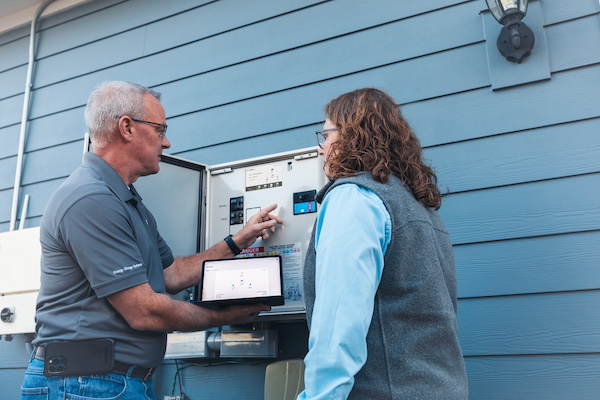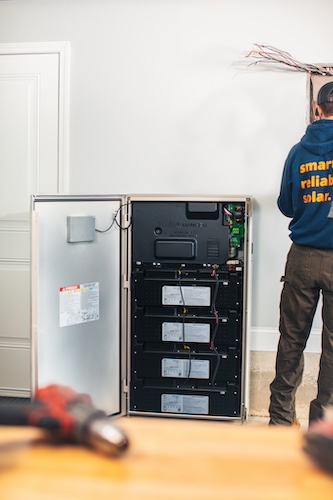Got Power? ESS offers a solution to increasing extreme weather
The summer of 2023 was the hottest in recorded history, hitting the United States with disproportionate force. A climatology report by PBS explained that the terrain in and surrounding the U.S. contributes to powerful competing air masses that result in extreme weather, inflamed by the fact that many of the major population centers in the country have been built near climate propellants like the ocean.
Though extreme climate events have increased, municipal infrastructures have not been updated to address the effects of worsening weather, which leaves U.S. homes and their owners vulnerable to the ravages of the elements. Nearly 70 percent of homeowners experienced a power outage during 2023, interrupting access to home appliances, lighting, charge for cellphones and other communication devices, and internet use. Grid-dependent homeowners faced with an outage had no choice but to wait for the utility company to resolve the issue in order to restore power.
Freedom from weather-related outages
As extreme weather increases, the option to relinquish grid-dependency and enjoy uninterrupted power grows more alluring. Energy storage systems (ESS) provide a way to store power for the home. Like a battery, residential ESS gather energy that can be used in an outage or during peak consumption times when energy prices spike. ESS can be installed on a floor or mounted to a wall, and are often kept out of sight in a basement or garage. Homeowners can choose the number of units in their ESS to tailor its performance to the size and desired energy needs of their home.
A shared and often weather-strained power grid means rising blackouts, brownouts, and outages that take away access to essential appliances people rely on for health, comfort, and safety. Homeowners with ESS, however, have an additional resource available to them during an outage; they can simply pull stored energy from their ESS to power certain home appliances.

In the case of an extended outage, the power stored in an ESS can be used for longer periods of time by only powering essential appliances like refrigerators or medical devices. ESS that are connected to rooftop solar panels can be recharged on sunny days to extend their power capacity during long outages. Energy independence mitigates the hazards and fears associated with losing power by giving homeowners more control over the power in their homes.
Solar panel or grid coupling options
Many homeowners have already invested in rooftop solar panels to minimize their reliance on the grid. While solar panels can help homeowners reduce and control their electric bills; instead of shoveling hundreds of dollars to the utility every month, adding an ESS increases their energy reliability. By storing energy from PV panels, the ESS ensures an additional source of power for the home so appliances can effectively operate day and night.
Yet for homeowners who do not have rooftop solar panels, ESS remains an equally viable option: ESS can connect to the grid and store grid-generated power, so when the entire neighborhood or town is experiencing a blackout, homes with ESS can stay powered on. During dangerous weather events, many ESS can be controlled from a mobile app to enable homeowners with ESS installed outdoors to operate the device from the safety of their homes.
 Incentives
Incentives
Like solar panels, residential ESS require an upfront investment, which may be eligible for an offset by state-specific incentive programs or The Inflation Reduction Act (IRA) credits, or, in some states, both. Homeowners may qualify for up to a 30 percent investment tax credit for home energy storage installation — which covers both the cost of the storage system and installation fees — until 2033. Previously, only homeowners with both an ESS and rooftop solar panels could qualify for this tax credit, but newer regulations allow those with and without rooftop solar panels to apply for the tax credit, making home ESS more widely accessible and affordable under the IRA. Several states offer their own additional ESS incentives, including California, New York, Florida, Ohio, Texas, Colorado, and several more. These state-specific incentives range from property tax exemptions, to sales tax exemptions, to rebate programs that earn homeowners credits (which can be cashed) based on the amount of energy their ESS produces. Many resources are available to homeowners to assist them in determining which incentives may apply to them, including their ESS installer.
Another way to offset costs is to use ESS to power homes during peak consumption times. After charging during lower usage periods when power prices are more stable, many ESS can utilize a self-consumption mode during peak usage periods, saving homeowners money by using their own stored power instead of paying the higher costs associated with high usage times.
Extreme weather events are intensifying, as is the climate’s impact on the grid. A residential energy storage system provides a dependable solution for homeowners looking for energy independence. Energy storage empowers all types of homeowners to take control of their energy costs and reliability, so when the grid goes down they’ve got power, even when their neighbors don’t.
Industry veteran Jim Brown leads residential ESS business development in the United States for LG Electronics.
LG Electronics | www.lg.com
Author: Jim Brown
Volume: 2024 May/June












